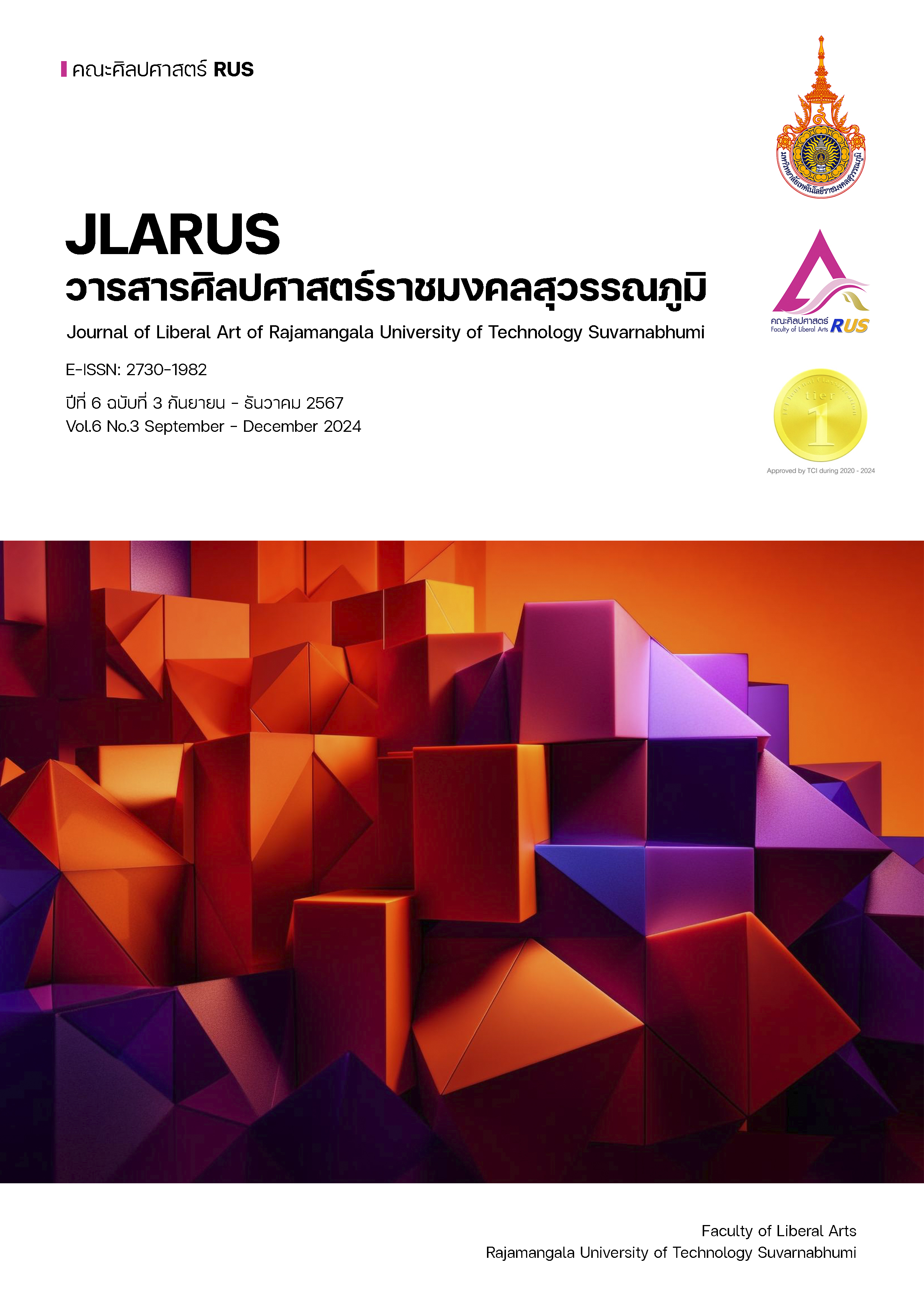THE EFFECTOF AN INSTRUCTIONAL MODEL USING CONSTRUCTIVIST THEORY AND PROBLEM-BASEDLEARNING APPROACH TO ENHANCE CHINESE READING AND WRITING ABILITIES OF PRIMARY SCHOOL STUDENTS IN CHINA
Main Article Content
Abstract
The purpose of this research was to study the effectiveness of the instructional model using constructivist theory and problem-based learning approach with 1) compare the Chinese reading and writing abilities after using an experiment between the experimental and control group; 2) compare the Chinese reading and writing abilities before and after using an experiment within the experimental group and the control group. The sample groups were two classrooms of 50 sixth-grade students per classroom selected by cluster random sampling from the Affiliated Primary School of Jilin Normal University in second semester of the academic year 2023, one class was selected as an experimental group to learn by the instructional model using constructivist theory and a problem-based learning approach, and the other class was selected as a control group to learn by traditional methods. The research instruments included: 1) 6 lesson plans using the instructional model using constructivist theory and a problem-based learning approach; 2) a 50-item Chinese reading ability test; and 3) a 1-item Chinese writing ability test. Research was conducted on the experimental group learning by the instructional model using constructivist theory and a problem-based learning approach, spending 24 periods, and the control group learning by traditional methods, spending 24 periods (pretest and posttest are not included). The research results provided:
- The students in experimental group had Chinese reading and writing abilities posttest score higher than the control group.
- The students in experimental group and control group had Chinese reading and writing ability scores on posttest are higher than pretest.
Article Details

This work is licensed under a Creative Commons Attribution-NonCommercial-NoDerivatives 4.0 International License.
References
Ali, S. S. (2019). Problem-based learning: A student-centered approach. English Language Teaching, 12(5), 73–78. https://doi.org/10.5539/elt.v12n5p73.
Barrows, H. S. (1986). A taxonomy of problem-based learning methods. Medical Education, 20(6), 481-486. https://doi.org/10.1111/j.1365-2923.1986.tb01386.x.
Broadbent, H. J., Osborne, T., Rea, M., Peng, A., Mareschal, D., & Kirkham, N. Z. (2018). Incidental category learning and cognitive load in a multisensory environment across childhood. Developmental Psychology, 54(6), 1020–1028. https://doi.org/10.1037/ dev0000472.
Brown, S. (1997). Estimating biomass and biomass change of tropical forests: A primer (FAO Forestry Paper No. 134). Food and Agriculture Organization of the United Nations.
Chen, X., & Chen, X. (2020). An Investigation on the Current Situation of Primary School Students' Chinese Reading Ability. Journal of Tangshan Teachers College, 42(6), 132-136.
Clymer, T. (1968). What is reading? Some current concepts. Teachers College Record, 69(10), 7-29.
Hilmawan, H., Musthafa, B., & Agustin, M. (2022). Enhancing Students' Literacy Skills through the Social Constructivism-Based Literacy Learning Environment Model. Cypriot Journal of Educational Sciences, 17(10), 3614–3624. https://doi.org/10.18844/cjes. v17i10.7842.
Loyens, S. M. M., & Gijbels, D. (2008). Effects of constructivist learning environments: Introducing a multi-directional approach. Instructional Science, 36(5-6), 351–357. https://doi.org/10.1007/s11251-008-9059-4.
Maastricht University. (2013). Annual report 2013. Retrieved June 27, 2014, from https://www. maastrichtuniversity.nl/news/annual-report-2013.
McVie, M. B., & Dunsmore, K. (2016). Constructing meaning through kid-friendly comprehension strategy instruction. The Reading Teacher, 70(6), 679–689.
Ministry of Education. (2022). Compulsory education Chinese curriculum standards. Beijing: Beijing Normal University Press.
Mollon, J., Knowles, E. E. M., Mathias, S. R., Gur, R., Peralta, J. M., Weiner, D. J., Robinson, E. B., Gur, R. E., Blangero, J., Almasy, L., & Glahn, D. C. (2021). Genetic influence on cognitive development between childhood and adulthood. Molecular Psychiatry, 26(2), 656–665. https://doi.org/10.1038/s41380-018-0277-0.
Piaget, J. (1976). Piaget’s Theory. New York: Meridian.
Rianti, R., Yuniati, M., Tandiana, S. T., Muzdalipah, I., & Supriyono, Y. (2024). Improving Students’ Reading Comprehension of Narrative Text through Problem-Based Learning. Ideguru: Jurnal Karya Ilmiah Guru, 9(1), 444–448. https://doi.org/10.51169/ideguru.v9i1.730.
Savery, J. R., & Duffy, T. M. (1995). Problem-Based Learning: An Instructional Model and its Constructivist Framework. Educational Technology, 35(5), 31-38.
Vygotsky, L. S., & Cole, M. (1978). Mind in society: Development of higher psychological processes. Cambridge, MA: Harvard University Press.
Zhang, R., Fang, Y., Wang, J., Xin, X., Zhang, J., Dong, X., & Yan, K. (2020). Language Life Blue Book: The Language Situation in Shanghai Report. Shanghai: The Commercial Press.


